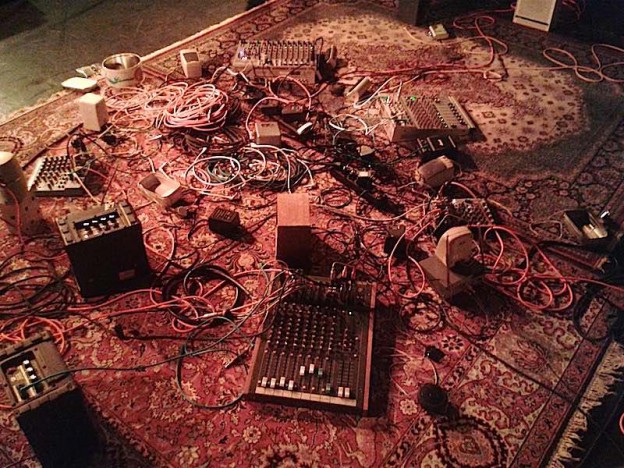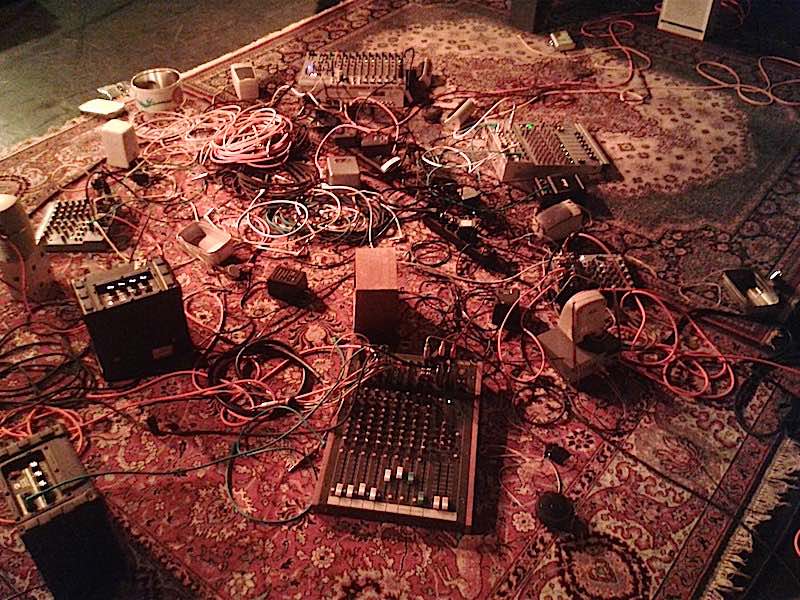CLANDESTINO FESTIVAL | GÖTEBORG | 5-6 JUNI 2015
Richard Widerberg och Barrie Sutcliffe är två göteborgsbaserade konstnärer som kommer att utföra installationen Electromagnetic Ecology, som med ljud från lokala radiostationer och ett kaotisk feedback-system remixar tillåtna media med de osynliga och reglerade vågor vi omges av.
INTERVJU MED BARRIE JAMES SUTCLIFFE:
1. Tell us about yourself and your relationship with the city/cities.
– I have a close relationship to the cities I live in. I like to visit as many places in a city as possible, to get to know them and the kind of people who live there. I’m fascinated by architecture, transport systems, nature, and how cultural events sneak around in the city’s infrastructure. Especially interesting is older cities that contain numerous structures interwoven into deep time, which shows how the past and future exist at once.
My preferred mode of transport is the bicycle, which is fast enough to be efficient but slow enough that I can use and memorize all the small lanes and paths that connect places together. To slowly walk around a city is also a pleasure, to wander like a flaneur. I try to get involved in the cultural life of the city but sometimes it’s hard to be involved in the civic life.
I am also obsessed with maps and mapping, and have maintained over several years a map of places in Gothenburg that are interesting or useful.
2. Tell us about which other projects you are involved in, besides Clandestino Talks.
– One thing I am working on is a study circle called The Harmony Group, based at the local art platform Skogen. I run it together with Valter Nordqvist and Richard Widerberg in an effort to come to grips with a complicated subject, possibly leading to a larger artwork in the end. To put it simply we study the relationship of harmony to control and the tension between those concepts both in a societal context but also psychologically and bodily. The group will meet regularly this spring and into the fall.
A crucial part of our practice is to engage in activities as well as study and discussion. Activities can put ideas into practice. The group is open and we are happy to now count several members with different backgrounds. So far we have gotten lost in a wild forest near Kungälv, experienced sound and chaotic systems in an abandoned harbour worker’s shower room at Götaverken in Gothenburg, and made a group performance at Göteborgs Konsthall.
Outside of that I am practicing and recording my own solo drone and noise sound works and conceptualizing new ones, including a new collaborative work involving radio and a mass grave.
3. What does the concept of Clandestino Talks, “Dysturbance”, mean to you?
– “Dysturbance” brings to mind dystopia, dysfunction, urbanity, and of course disturbance. The urban space is a place of control and almost non-stop communication. The violent noise, physical movement, strict social norms, and mass surveillance definitely brings to mind the sense that we already live in a dystopia. Gothenburg is however very soft and easy to handle in comparison to unimaginably dense and colourful nightmares like London, which is both wonderful and terrifying in its speed and complexity. I am always in amazement about how cities manage to function at all given their multiplicities.
However, the human living in a city must also function at a high level, and must have immense control over their life in order to not get ground up and destroyed in the urban machine. The work of underground culture often seeks to disturb this network, but is more often than not forced to succumb to the forces that run the place: money, developers, consumerist expansion, gentrification, strict alcohol and noise laws, gangs, bored police, cutbacks to funding, etc. It is extremely difficult to speak up, to be heard, to reach anything more than a tiny fraction of the population, the majority of which are spoon fed by mass media. True disturbance may not be possible anymore in this context, and that is the real dystopia.

